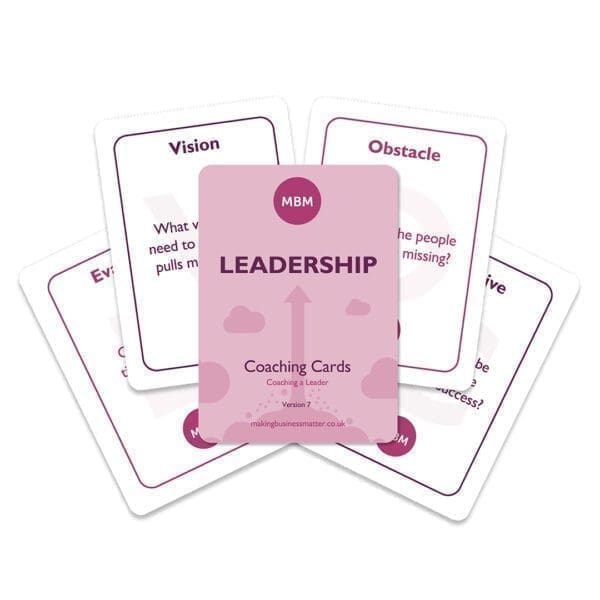Top Leadership Examples that Will Let You Stand Out from the Rest and Exceed Expectations
Every leader wants to create a great work environment for their team. There are many different leadership examples out there that can help you make a positive impact. However, how do you know which will work best?
Speaking from experience, I can tell you that there are many different traits that make an amazing leader. Think of that leader that still makes you want to be better. Now, imagine that you can make that same impression on members of your team. Well, that’s what we’re here to help you with.
So, why this article, you may be asking? Probably because I have been in your role, and stood where you are now. I have led teams in the past. Also, I have had my fair share of memorable and disastrous leaders of my own. As a result, I will be speaking from my personal experience and can guide you in the right direction. It all depends on where you’re hoping to go, as a leader, and what you’re hoping to achieve. I believe we have something for everyone. So, let’s get started with these top leadership examples to get you moving in the right direction.


>> Leadership Coaching Cards <<
What Do We Mean by Leadership Examples?
People have MANY different qualities and traits that come together to make the overall persona of the leader. You will surely find many articles out there that will share real-life examples of leaders and how they achieved success. Also, other articles will focus on the particular leadership styles that you can use.
For the purpose of this article, I will share 15 leadership examples in terms of practical tips you can start using today to achieve great things with your team and for your company. Some you may be using already. Others you may need to really review in order to apply them. However, there is no doubt that of the 15 leadership examples, you will come away from this with a refreshed outlook on how you lead others.
Our 15 Top Tips at Your Finger Tips
So, let’s take a summary look at what we will be covering before we go into each area in detail. Our 15 top leadership examples are really as simple as A, B, C:
- Analyse strengths and improvements
- Build relationships
- Communicate effectively
- Direct with clarity
- Engage your team
- Forgive mistakes
- Generate energy and passion
- Help without hovering
- Involve the team
- Juggle between styles
- Know the competition
- Lead by example
- Manage conflict
- Never stop learning
- Open doors for others
So, it may seem like a long list. However, I am sure once we have delved deeper into each example, you will find something that reminds you of your own approach or where you want to be. They don’t go in any particular order. The A, B, C, approach is simply to help you connect with them better.
#1- Analyse Strengths and Improvements

Every member of the team has a part to play in achieving success. However, each of us, no matter how experienced, can always improve in certain areas. As a leader, you need to properly identify the strengths and areas of improvement for each person under your charge. Only then can you properly assign responsibilities effectively to get the job done. So, how can this be achieved?
First, think of your team members. Now, analyse the role that each of them plays in the bigger picture of the goals and targets you are trying to achieve. Next, identify the strengths and areas of improvement for each person involved. And now, assign the roles matching the strengths of the individuals.
Here, you will see more motivated and productive team members. We work harder and give more to tasks that align with our personal strengths. However, don’t forget the areas of improvement. Here, as a leader, you are responsible for ensuring that these limits are not negatively impacting the team. Create development opportunities so these gaps can be minimised.
By analysing these areas for each of your team members, you are showing forward-thinking in terms of assigning roles and achieving results.
Sticky Learning ® is 7 times more effective than 1-day training courses. Plus, you will get a Chain of Evidence proving your Return on Investment. Discover soft skills training that changes behaviours long term.

#2- Build Relationships

Leaders need to build connections and understanding with the different members of their team. This doesn’t mean that you need to be best friends or drinking buddies. However, it does mean taking an active interest in the people you lead. There are a number of ways that we can do that.
First, set time aside once a month to have quick, informal chats with your team individually and as a group. Both should be given time. The one-to-one time will allow people to open up and share with you how they are feeling about their role, contribution, and the group. When you come together as a team, you have opportunities to work on the team dynamic.
Second, offer short team activities that everyone can get involved in. These can be coffee breaks together, brainstorming sessions, or even more in-depth tasks such as team building. Whichever selection you decide on, be sure that everyone joins in. Therefore, ask the team for suggestions that may improve the chances of more willing participation. Not everyone likes role-playing or team bonding tasks. However, there will surely be a number of activities you can get everyone excited about.
Third, have some knowledge about the people you work with. Do they have kids? What hobbies interest them? Even, ask about their health and well-being. This type of information will help you make decisions later on. For example, imagine Mary has a young child and needs certain time off for visits to the school or doctor’s visits. Well, as a leader, you can make more effective decisions if Mary comes to you asking for time off. Leaders need to show empathy for their team as well as achieve results.
Relationship Building in Action
I know from experience that when you have a leader that can understand your needs, you will commit to them more. I had the experience of finding out a number of years ago that I was pregnant while working abroad. The company could have simply ended my contract and looked for someone different to fill the role. Instead, they worked out the leave I would need, my contract and visa renewal, and my return to the resort with my baby daughter and mother to allow me to continue working with them.
These steps made me even more committed to the company over the years knowing that they valued me and my contribution so much. This has stayed with me over the years and I try to lead in a similar way.
#3- Communicate Effectively

Communication is a key element for a leader to achieve success. When communication is working well, the team has openness and trust. Communication gaps need to be avoided. Therefore, be sure to practice the following:
- Avoid one-way conversations – interact rather than lecture.
- Ensure everyone can share issues – nobody should fear retaliation for sharing a concern.
- Listen actively – give your full attention and then reply.
- Ask questions – this will allow you to check for understanding.
- Share all relevant information – remain transparent to build trust.
- Communicate in a timely manner – don’t leave everything to the last minute because stress will build.
- Avoid mixing topics – stay on topic to reduce the possibility of confusion or misunderstanding.
- Know your audience – communicate in a way that everyone can follow your meaning.
- Watch your tone and body language – everything should match.
Effective communication is not about being the only person sharing. It is about ensuring that messages are shared and understood properly. It’s also about making sure that everyone is on the same page.
#4- Direct with Clarity

You have heard the leadership saying “You are the captain of your ship”. Therefore, you are responsible for navigating the team in the right direction to achieve results.
As a leader, you need to create proper direction for the team. Using the tips mentioned above, in the section about communication, will be a great help. However, there is more to it than that.
Direction is about setting goals and targets. It’s also about having a plan to achieve them. Therefore, clarity will be essential for these to be achieved.
Clarity comes in different forms. First, everyone needs to know their roles and responsibilities. No task can be accomplished without this clarification. Also, there needs to be a clear understanding of how goals can be achieved.
From experience, when clear direction is missing, confusion takes over. I have seen first-hand the levels of frustration that can occur when people are missing direction. Everyone does their own thing and aims for different targets. Very often, people become self-absorbed here, forgetting the team objectives. Once a leader has clarified the direction the team will take together, better success is achieved.
#5- Engage Your Team

Another important element of leadership examples is engagement. But, what is engagement? In a Forbes article about employee engagement, the definition is “the emotional commitment the employee has to the organisation and its goals”. Therefore, engagement can be explained by the amount an individual cares about their work and company.
As a leader, you are accountable for creating an environment where engagement can happen. You want more than team members who do the bare minimum or work just for the salary. Highly-engaged staff are more productive, stay with the company longer, and collaborate more. These are all very beneficial in terms of team tasks.
So, how do we engage our team? There are a number of approaches we can take.
- Recognise and praise positive contributions.
- Offer opportunities for career growth.
- Make sure all necessary resources are available to get the work done.
- Support people through tough times and challenges.
- Connect personal goals to those of the company.
- Encourage team members to take part in problem-solving and decision-making activities.
- Create an inclusive and equal workplace.
- Value your team members individually and as a group.
Creating and maintaining engagement will bring great rewards. Your team and the company will all see and feel the benefits. Therefore, invest time in this valuable leadership example.
#6- Forgive Mistakes

As leadership examples go, this may not have seemed an obvious choice. As a leader, I can tell you this is a crucial tool to have in your bag. Let me explain why.
We all make mistakes. Some can be small issues that are easily rectified. Others may have serious ramifications for the team or company. This can be in terms of finances, customer experience or team morale. Regardless, there is one thing a leader needs to keep in mind. When a mistake happens and the person responsible stays in the team, you need to find a way to move forward.
Let’s say there was an issue where a team member is given a warning as a result of some incident. As part of the action, you need to work on a plan to avoid the same from happening again in the future. Also, you need to support the team member to reconnect with the team after the fact. A common mistake leaders make is to hold onto that incident. They refer back to it regularly, regardless of the progress the individual has made to improve. This can create a lingering negative effect on the team member, often resulting in them leaving.
Therefore, once you lead the way to work with the team member through the challenges, you can let the issue go. Forget the incident. Instead, focus on the positive improvements you witness.
#7- Generate Energy and Passion

Think of leaders you have worked with in the past, or even currently work with. Now, compare passionate leaders to those who simply go through the motions. What difference does it make? The passion and energy that leaders generate with the team is highly contagious. As leadership examples go, this can be a game-changer.
I have worked with both types of leaders. Over the years, I have always seen better success for the company with leaders who generate great levels of passion. Their enthusiasm is energising for those around them. Tough days seem easier when the leader remains positive and energetic on goals still being achieved.
I know this can be challenging. Leaders are only human, after all. However, we need to make every effort to show that passion every day. Once it starts to wane, the team will notice. They will hear it, see it, and feel it. Therefore, push through those difficult times and allow your passion to shine.
#8- Help Without Hovering

Many leadership examples will include terms such as support and encouragement. This type of help is essential for leaders to practice. However, we need to be careful not to cross the line from helping to hovering. Here, we run the risk of micro-managing. And nobody appreciates being micro-managed.
We need to know as leaders when to step in with help and when to step back and watch the situation unfold. Offering help and support is always a great approach to take. This is especially true with a new joiner or someone with a new role or task. However, avoid using this approach every time. You will have opportunities to let the team members with the necessary knowledge and skills work unsupervised. It’s how we learn and grow, especially in terms of confidence. More experienced team members will resent constant hovering. It places doubt in their minds about your level of trust in their abilities.
So, let’s find ways to help without hovering. This way, you allow others to flourish in their own spotlight. Give them these chances to shine.
#9- Involve the Team

Despite common belief, leaders don’t always have all the answers or all the great ideas. Your team are a great source of creativity and knowledge. Therefore, use these amazing resources when possible. You can create brainstorming activities that allow all participants to share their thoughts and suggestions. Also, give your team members a voice during group meetings. These can be great opportunities for one idea to grow and take form with multiple people contributing.
There are cases where team involvement wouldn’t be appropriate. So, as a leader, you need to know the difference between these occasions and choose wisely. For example, if a team member is being disciplined, this is NOT a time to include the whole team. Another example would be when there is sensitive information that needs protecting. Also, avoid involving the team in group decisions when emergencies occur and time is of the essence.
However, there are many more examples of when the team can be included rather than when they can’t. Be ready to include the team more often. You will see the benefits it reaps.
#10- Juggle Between Styles

I mentioned earlier that some articles discuss leadership styles when writing about leadership examples. I won’t be covering them in this article. Instead, you can check out our article on Leadership Styles.
What I will mention here is the importance of being able to juggle the different leadership styles to achieve better results. No single style works for EVERY occasion. Therefore, you need to be able to move between the styles depending on the situation. This sounds easier than it is. But it can be done.
- First, know the different styles out there. Understand their advantages and limitation.
- Next, analyse the situation to decide which style would suit you best.
- Then, apply the style you have chosen. Use the key practices and characteristics.
However, if your first choice isn’t getting the results you expect, change. One situation may require you to move between different styles. Let me give you an example.
Imagine 2 team members wanting the same week off for different reasons. However, you can only give the week off to one of them based on business needs. You can start with the Participative or Democratic style. This allows the team members to be involved in the decision-making process. You listen to their reasons and see if a solution can be reached. However, this approach results in a stalemate. Then, move to a Coercive approach. This means you as the leader makes the decision. It can mean that not everyone will be happy with the decision. However, a decision will be reached. Know what style might work best for the situation and apply it accordingly.
#11- Know the Competition

If you want to get the best results with your team, you need to know what you’re up against in the market. This will help you and your team perform better. Knowing the competition is important in terms of customer needs and market share. It’s not enough to think that you’re the best out there. You really need to check.
Competitor checks can be fun group activities for the team to be involved in. This can be through networking opportunities. Or, you could use site visits, where possible. Also, product checks are another good way of checking.
You can start with an activity such as having the team do a SWOT analysis together. This highlights your internal Strengths and Weaknesses as well as external Opportunities and Threats. This will allow the team to better understand where they are situated in comparison to the competition.
Whichever approach you choose, as the leader, you need to know what you’re up against. No leader can stick their head in the sand and expect to stay ahead of the game. Encourage your team to check how their competitors are being reviewed online. Also, keep the competition healthy. You want the team to want to win, but not at any cost.
#12- Lead by Example

This is a classic example of our leadership examples in practice. However, as they say, “it’s an old one but a good one”. This still stands up to scrutiny to this day. The reason is that people practice what they see from others. If you, as a leader, speak positively about the company, others will too. However, if your actions or words are negative, these will be copied too.
Select your words and behaviour carefully. People are always watching and listening. Also, watch how you speak and act even in informal settings. Suppose you go for a coffee with some of the team during break time. Even then, be aware of how you may be viewed. It’s about not letting your guard down in your role as a leader.
I have witnessed members of one department behave badly to another simply because their 2 leaders were having a disagreement. There were no issues between the staff, however, the tension carried over through the 2 groups based on their leaders’ actions. This can’t happen. Otherwise, we run the risk of the company and customers suffering unnecessarily.
Instead, we need leaders to display the strength of character and positive interpersonal relations. These are great examples to show our team. Other examples include speaking positively about the company, even during tough times, avoiding conflict through effective communication, and not blaming other people when things go wrong. This brings us to our next example.
#13- Manage Conflict

Conflict will happen. It’s human nature. Any team can have even small misunderstandings. How the leader handles the potential conflict is important. Using a mix of the other leadership examples we have covered, leaders can tackle conflict more effectively.
Managing conflict involves a number of elements:
- Be the calm in the storm. The last thing you should do is throw fuel on the fire.
- Remain neutral. Don’t show favouritism or bias when handling conflict.
- Be patient. Everyone involved needs their turn to explain what happened from their point of view.
- Stay open-minded. Don’t go into the situation with your mind already made up.
- Be ready to negotiate. This may be needed to find a solution everyone can agree to.
- Manage the emotions in the room. In case the situation is getting heated, you need to be the one to control the level of emotion. This includes your own emotions as well.
Remember, conflict can be prevented in many cases through effective leadership. Put these leadership examples into practice and you will see fewer conflicts occurring in the team.
#14- Never Stop Learning

Anyone who says they know everything still has a lot to learn. As a leader, set a great example for your team by engaging in learning opportunities. These don’t always have to be formal classroom sessions. You can learn on the job from your colleagues, other leaders, and team. Also, there are online learning options as well.
When you learn something from a team member, acknowledge it. It will build their confidence and encourage them to share their knowledge and skills again. Put yourself into positions where learning can happen. When the company offers training and development chances, speak positively about them around your team.
From my years of experience as a Training Manager, how the leader acts about training has a big impact on the team. I have had my fair share of leaders who demotivate their teams about training. They do this by criticising training, talking about how it’s a waste of time, and trying to avoid sending their team members for sessions.
I’m sure you can imagine how these team members usually behave when they finally make it to training. They are negative, disruptive, and cynical before the training even starts. Imagine how that makes the trainer feel. Sometimes, it’s just their mentality about training. However, from my experience, more often it’s because of how their leader has spoken about the sessions. So, let’s stay positive about training for yourself and your team members.
#15- Open Doors for Others

Another important element in our leadership examples is making sure people in your team have chances to grow. Many people will get bored and frustrated in the same job over an extended period of time. Therefore, you need to open doors for others to have the chance to develop and grow. Growth in the workplace doesn’t always have to be about promotion. It can be about making the person more competent in their current roles too.
For this to happen, you need to be ready to invest time and effort. There needs to be a development plan. This needs to reflect their strengths as well as areas of improvement. Next, there need to be clear goals for the individual to achieve during this plan. This can be on-the-job, cross-training in another area of the company, or through structured learning.
Whatever the approach, each step needs to be clearly defined. Then, have a conversation with your team member about the plan and your expectations. You need to also discuss what your role, as the leader, will be. Explain the support they will be given in addition to assessments or assignments they need to show completion. Finally, set realistic timeframes. These will ensure that plans have a time goal to work towards.
Opening Doors in the Right Way
Once these steps have happened, then we need to see the development come to life. Avoid making too many changes to these plans. This can discourage the participants. Also, if you commit to time for development as per the plan, stick to that as much as humanly possible. Otherwise, the entire plan could easily go off the rails. Once that happens, it’s hard to get things back on track.
You are in the driver’s seat in terms of making development opportunities available. They need to be individual to the person taking part. Also, they need to align with the company and individual targets for them to work effectively.
Leadership Examples in Action
Now, it’s time to put everything into action. My suggestion is to mix and match a small selection of the above leadership examples at a time. For example, select 3 that you want to enhance and have those as your target for the next few weeks. You can combine the letters to make your own acronyms if that helps (I find that it does).
So, in this case, you have selected CAN, meaning you’re going to focus on:
- Communicate effectively,
- Analyse the strengths and improvements, and
- Never stop learning.
Practice these with your team and see how the suggestions we gave help you achieve better success. By making these matches, you can better imagine the way forward. Best of luck with making these leadership examples work for you and your team.
Check us out on YouTube.
Updated: August 2023 by Ailish O’Rourke-Henriette




